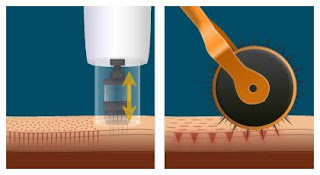Why Didn't Anyone Tell Me: Dental Routine
Growing up in India there were some cultural norms that were very different from the West, specifically when it came to dental hygiene. I remember seeing my grandfather chew on twigs from the neem tree to help prevent decay. Of course we had toothbrushes and toothpaste, but this was what he had grown up with. We only brushed our teeth once a day and it was the first thing you did when you woke up.
Moving to the States, our routine evolved to include brushing 2x day, flossing etc. However, as an adult, I am now realizing that there is a preferred order to things when it comes to dental hygiene.
MYTH #1: Rinse after brushing
Wait, what, no...ew. That was my first reaction when I found out that it is not necessary to rinse after you brush your teeth. Yes, of course, you spit out the lather but if you rinse out the toothpaste, you decrease the protection it gives. Leaving it intact gives just a bit more protection than if you rinsed it out. Plus, if you can, flossing after brushing means you can use the toothpaste residue in between teeth to help get them cleaner.
MYTH #2: Mouthwash is good
I mean...unless you are addressing a specific issue and have a mouthwash that is designed for that (like dry mouth or prescription mouthwash for gingivitis), mouthwash, especially the ones with alcohol that burn, kills all the good and bad bacteria in your mouth. Plus it is super temporary because after a bit, the bacteria will grow right back. So, sure...mouthwash if you feel like it but avoid the ones with alcohol. The best mouthwash? Colgate Total with CPC (cetylpyridinium chloride) can help provide a layer of protection between brushing.
MYTH #3: Fluoride is good
So, too much fluoride is bad and not enough fluoride is bad. Most adults get enough fluoride because of their drinking water but it isn't fluoride that cleans your teeth. The scrubbing action of your toothbrush is so important that if you brushed your teeth without toothpaste, it would still be effective at removing plaque. In fact, that is what makes mechanical toothbrushes so critical, their safe and effective brushing helps get residue that manual toothbrushes miss.
The one switch I have done is going from a fluoride toothpaste to one with hydroxyapatite. This ingredient is unique because, unlike fluoride, is absorbed by your teeth to help fill enamel fissures and remineralize your teeth.
MYTH #4: Brush your teeth after eating
Ok, granted, the heading is a bit misleading because you should brush your teeth after eating but not immediately after! In fact, your mouth is a bit acidic after eating and brushing your teeth right after can cause that acid to be spread around. By waiting 20-30 minutes after eating, your saliva helps neutralized your mouth and can be brushed safely. Don't wait too long because the bacteria in your mouth will set right to work too!
MYTH #5: White teeth are good
So, what is the perfect routine?
Here is where the obligatory disclaimer goes that I am not a dentist and each person's perfect is unique to them but here is what is recommend based on what is known today:
- Brush your teeth 20-30 minutes after eating
- Floss
- Use a toothpaste with hydroxyapatite
- Mouthwash is optional but tongue cleaning is not
- Brush your teeth twice a day
There is no replacement for brushing and flossing regularly so at a minimum, your routine should include these steps. Plus, good dental hygiene helps make sure you avoid long-term pain and expenses!




Comments
Post a Comment